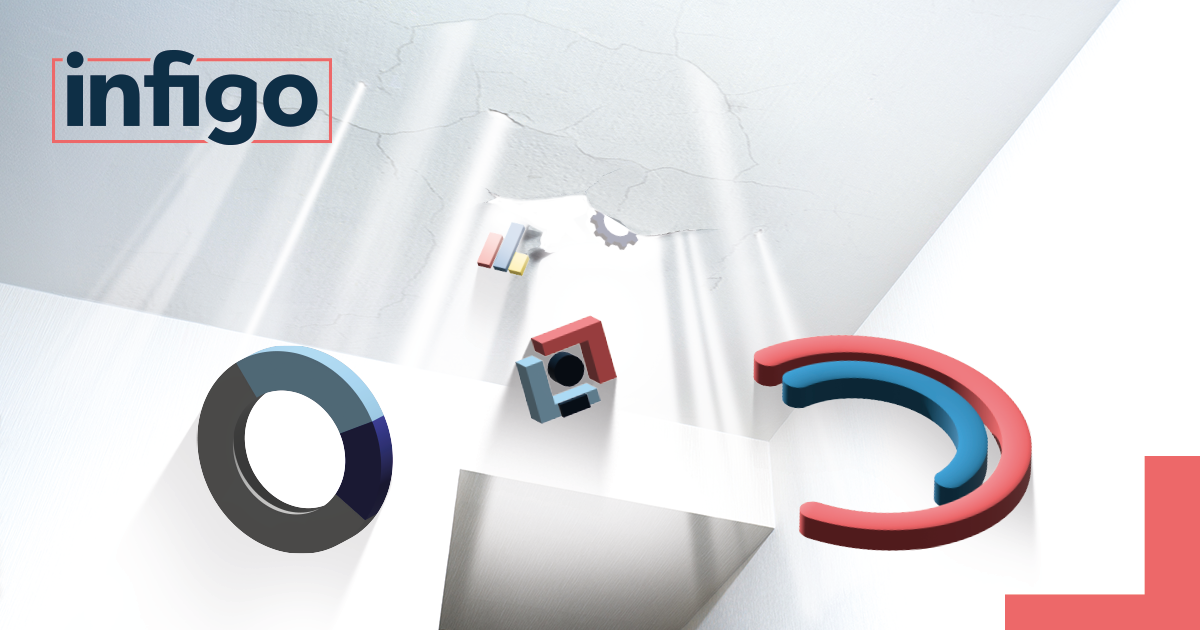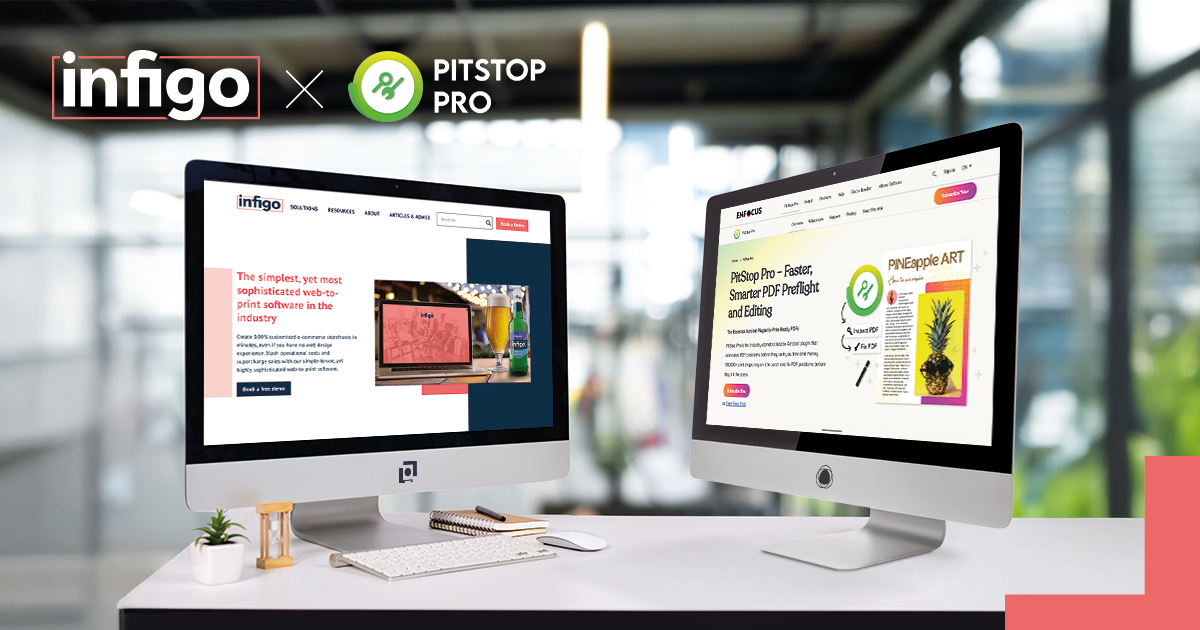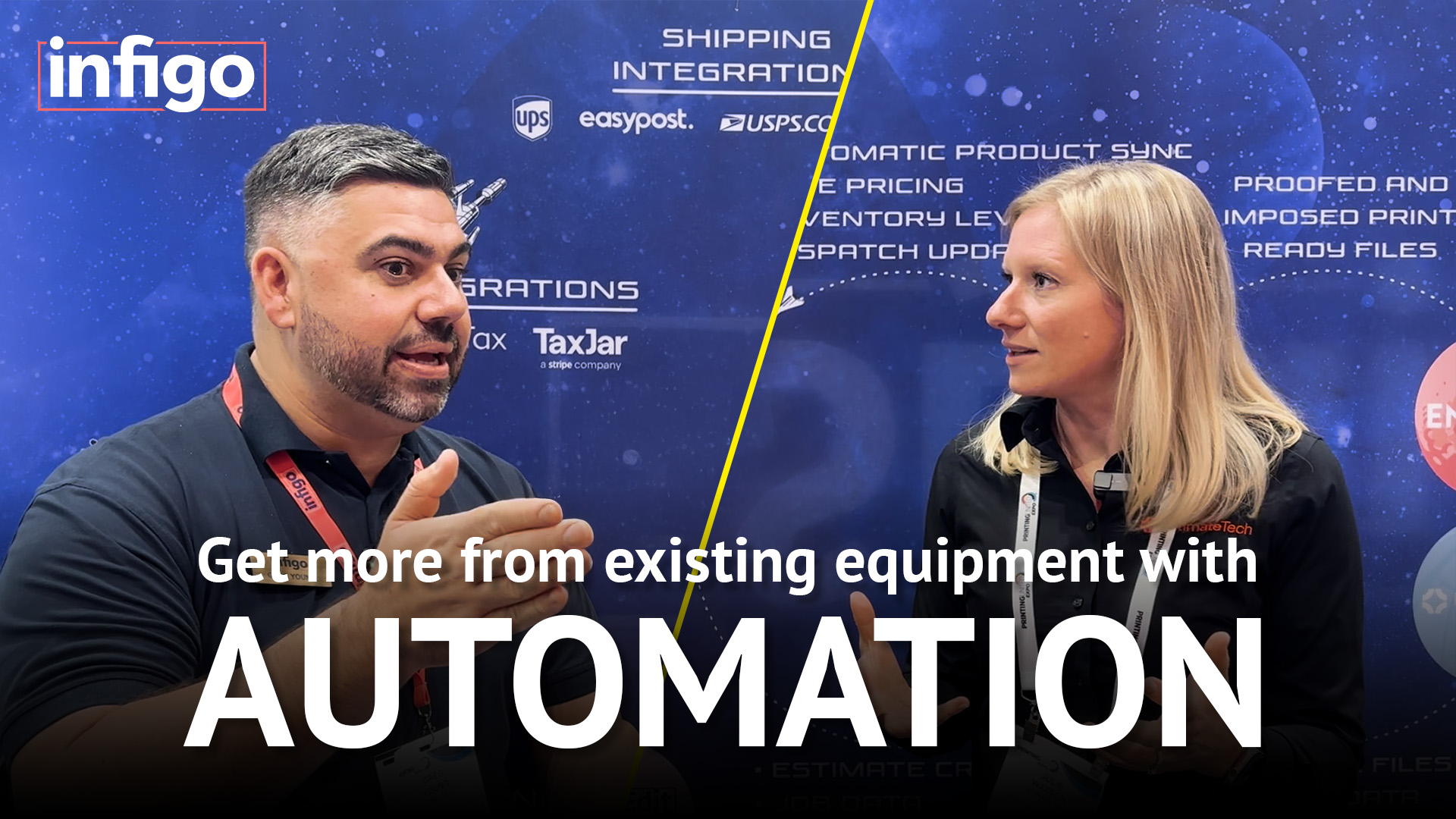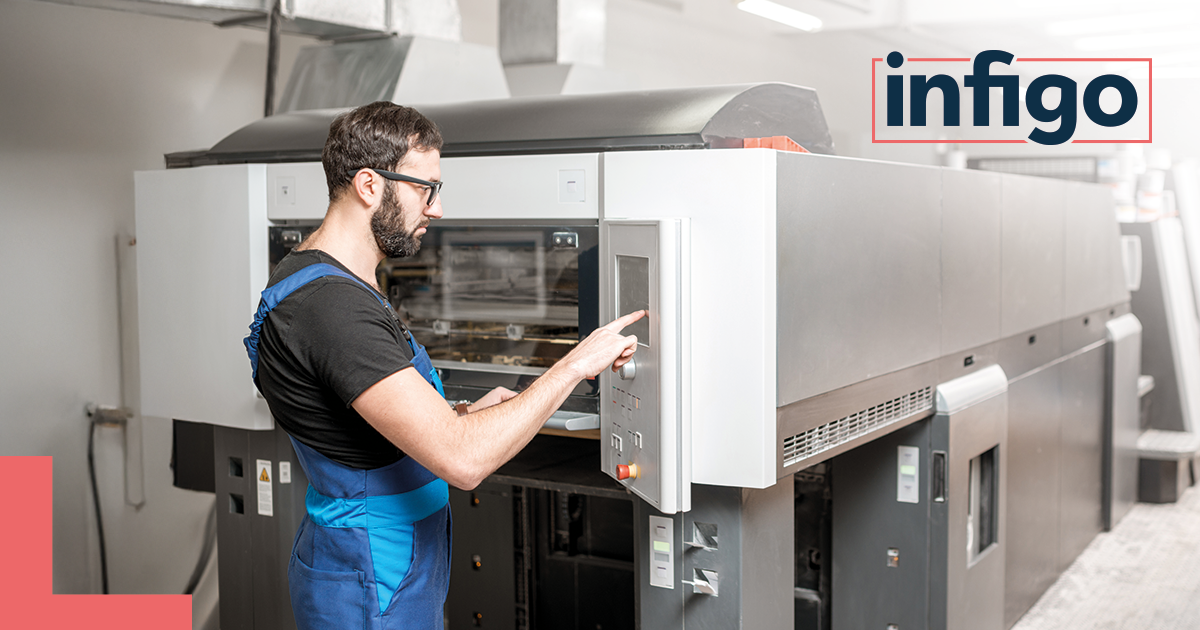Companies not driving innovation and automation will inevitably hit a ceiling, limiting both the volume of work they can handle and the profit margins they can achieve. This article explores the real-world benefits of embracing automation and fostering a culture of innovation in your print business; and the risks of staying stuck in the past.
In today’s fast and competitive print landscape, the need to be efficient and cost effective is more important than ever before. Clinging to manual processes, throwing people at problems, or ignoring improvements in software and automation options of today isn’t just inefficient anymore – it’s simply unsustainable. If your business can’t adapt, it can’t scale, and you will be left behind.
What is the Paper Ceiling?
The paper ceiling refers to the operational limit your print business hits when relying solely on traditional manual workflows. This is especially true for quoting, onboarding, production, and delivery.
Are you limited to the types of work you can take on because it’s not profitable? This is normal, but that can change if you do. In this article we plan to show you how and why you need to break through your Paper Ceiling using technology and automation, and a mindset shift.
How Print Automation Enables Shorter, More Customised Runs
Industry trends show that there is an increasing demand from customers to be able to order smaller quantities of personalized or customized artwork. By the end of 2025, digital printing is projected to surpass 50% of the global printing market – driven primarily by a steep rise in short-run and customized jobs.
Many Print Service Providers (PSPs) reject smaller jobs, like 250 unit runs, because manual workflows make them time-consuming, unprofitable, or logistically disruptive. But as digital print demand rises, scalable print automation is the key to turning these jobs into profitable, repeatable business.
Speed, Precision, and Modern Customer Expectations
Amazon has had an unparalleled impact on consumer habits and expectations. No longer are customers happy to wait 1-2 weeks for their orders to be delivered but instead they want to be able to place an order online, get a price, proof it and set a delivery date that is in days and be confident that it will turn up. More than ever, the Right First Time (RFT) approach is imperative. Not spotting errors or having to reprint jobs not only delays delivery, but also eats into your margins.
How Manual Workflows Limit Print Automation Potential
Workflows that have been in place for years because “that’s how we’ve always done it” are commonplace. But having over complicated workflows, having only one or two people in the business that are critical to those workflows happening and involving lots of manual touchpoints just creates significant bottlenecks and operational inefficiencies that limit your ability to grow and stay competitive. Simplifying, standardizing and automating your workflows will allow you to reduce your overheads, reduce your headcount, and improve your profit margins.
The Real Risks of Inaction
“That’s a big change, we’re too busy to think about that right now”
“What we have works, why change it?”
“We’ll never be able to compete with the other PSPs doing short run digital so why try”
These are all statements we have heard over the years from people in the industry, and the reality is the longer you wait to make a change, the more you bleed margin.
Yes, what you have may work, but you must redefine what you want ‘works’ to look like. Hiring a person (let’s call them John) just to produce job tickets that follow jobs around the print floor does work, but should the business be outlaying a whole salary for a low skill, repetitive job like this? Does ‘John’ get satisfaction from it and are their skills really being used to the fullest? No. So, whilst it might work, for now, it should not be seen as a reason to not want to change.
The stark reality is, if you are turning away work because you can’t take on shorter runs or are at capacity… customers or potential customers will go elsewhere.
If you can’t offer a competitive price because your costs to produce the work are too high… customers or potential customers will go elsewhere.
If you take too long to produce and dispatch an order because your processes are over complex, slow and manual… customers will go elsewhere.
“If you can’t quote and prep a job in minutes, you’re already behind.”
But that doesn’t have to be the case forever.
Transformation Through Automation
For many print businesses, the road to scalable growth starts with one shift: moving from reactive to proactive operations. That transformation often begins with automation.
Let’s look at a real-world example of how one print service provider (PSP) streamlined its operations by adopting a web-to-print platform and automation strategy.
Previously, quoting took several hours. Job tickets were created manually, often by a dedicated employee. Small-run jobs were unprofitable, and bottlenecks in pre-press slowed turnaround times. With automated systems in place, the same business reduced quoting time to under 10 seconds, handled triple the daily job volume, and made short runs financially viable.
The shift didn’t just improve speed, it increased margins, reduced error rates, and freed up staff to focus on higher-value work.
Example print efficiency gains proof points (That we have delivered with customers):
Quote Turnaround: From 4–6 hours → under 10 seconds
Manual Touchpoints: From 5–6 steps → 1–2 automated steps
Daily Throughput: From 10 jobs/day → 30+ jobs/day
Small Run Viability: From loss-making → profitable at scale
These kinds of improvements aren’t limited to one business. According to Keypoint Intelligence, 61% of companies that adopt automated workflows see a return on investment within six months. Typical results include labor and error savings of over $50,000 per year, with operating costs reduced by up to 30%.
Culture Is the Real Catalyst
Technology alone doesn’t drive transformation, it’s mindset that makes the difference.
To truly break through operational limits, organizations need to embed innovation into their culture. That means empowering every team member, from developers to customer service reps, to suggest and implement improvements.
When innovation becomes part of daily operations, businesses are no longer limited by legacy processes or staffing constraints. Instead, they gain the flexibility to adapt, evolve, and lead.
“Innovation isn’t just a department, it’s a cultural mindset that drives every decision.”
Looking Ahead: Breaking the Paper Ceiling
The Paper Ceiling isn’t just a technical challenge, it’s a strategic one. It’s the invisible limit imposed by outdated systems, manual workflows, and resistance to change. But that ceiling isn’t fixed. It can be broken with the right combination of automation, mindset, and support.
Hundreds of PSPs have already made the leap, adopting smarter systems, streamlining their processes, and scaling their businesses sustainably.
Want to learn how others in the industry are breaking through the Paper Ceiling? Our team has helped print businesses of all sizes take the first step, whether that’s exploring automation options, integrating web-to-print platforms, or simply rethinking workflow strategies.
Let’s start a conversation about what’s possible for your business.




